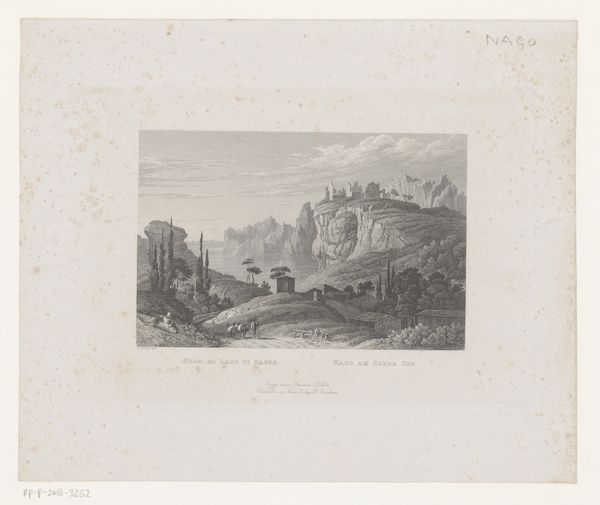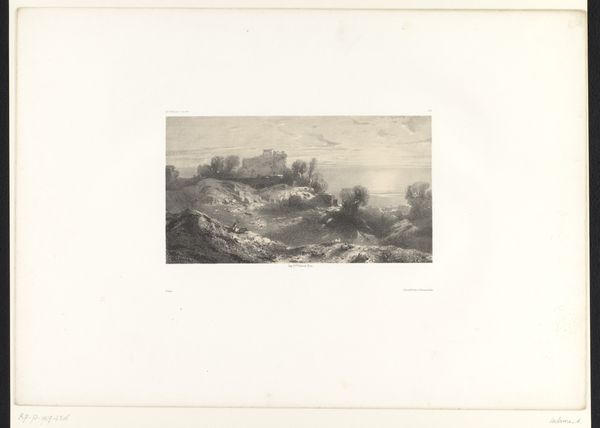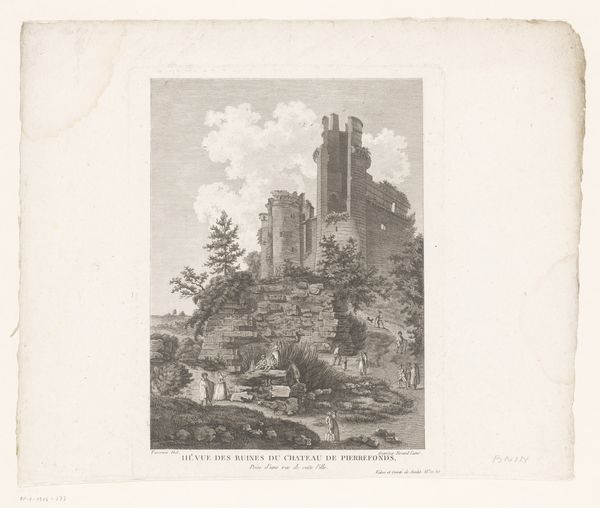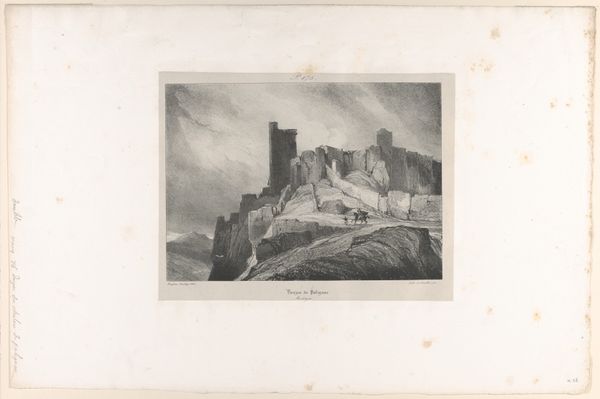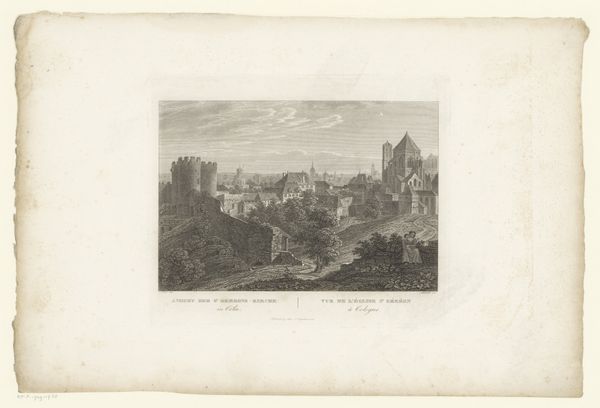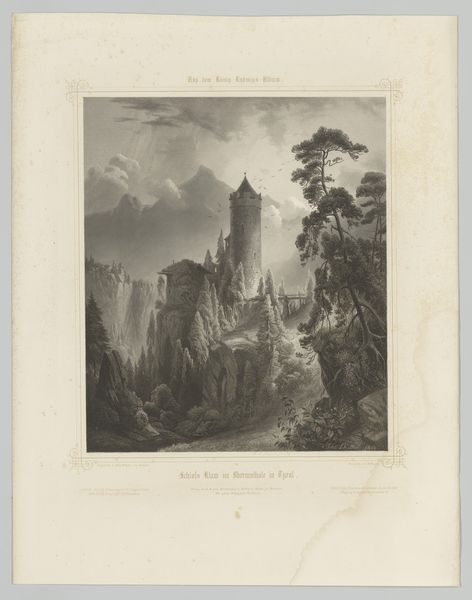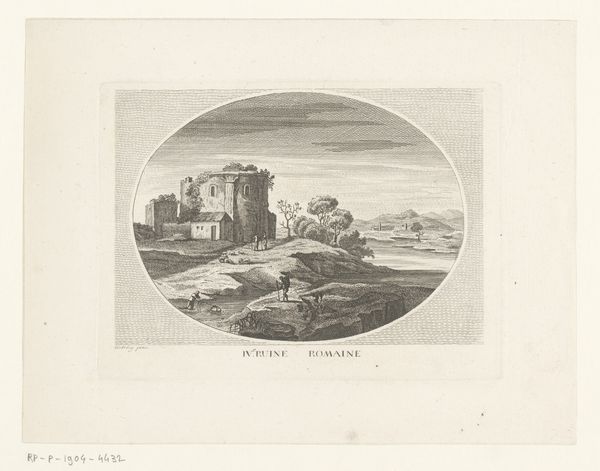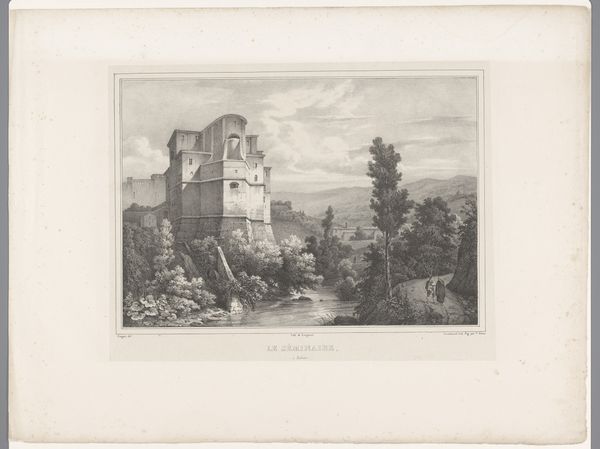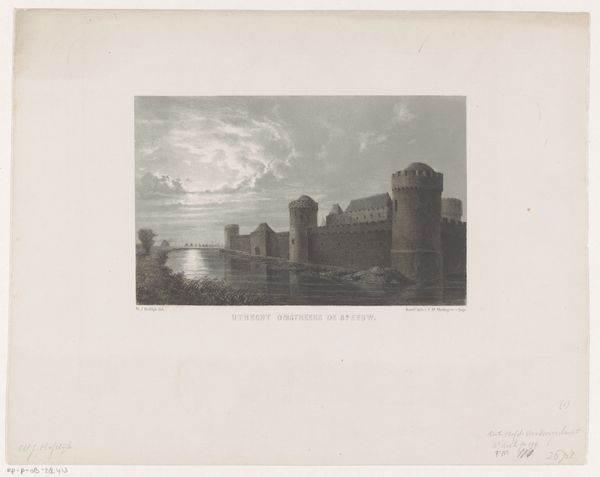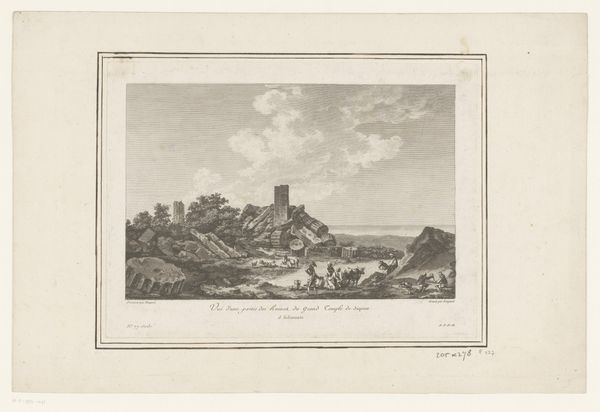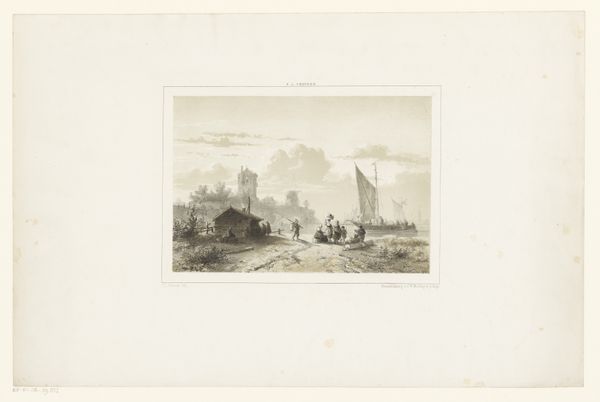
Zicht op de ruïne van het kasteel van de Vier Heemskinderen c. 1850
0:00
0:00
louisjulienjacottet
Rijksmuseum
aquatint, print, etching
#
aquatint
# print
#
etching
#
landscape
#
romanticism
#
cityscape
#
history-painting
Dimensions: height 277 mm, width 360 mm
Copyright: Rijks Museum: Open Domain
Curator: This print by Louis-Julien Jacottet, made around 1850, captures a “View of the Ruins of the Castle of the Four Sons of Aymon.” It's an intriguing example of Romantic landscape. Editor: It's hauntingly beautiful, isn't it? The ruins loom against that dusky sky, almost ethereal. I wonder about the specific printmaking process—you can see the textural depth from the etching and aquatint working together. Curator: Yes, Jacottet skillfully combines etching and aquatint, creating a tonal range that really emphasizes the ruin's monumentality. What I find interesting is how this image, rendered through such a process, participates in the nineteenth-century fascination with historical ruins. Think of it in terms of nationalism, the way the crumbling castle serves as a stage for national mythology. Editor: Exactly! And aquatint is crucial here; notice how the granular surface mimics the weathered stone and evokes a sense of decay, highlighting not only the form but also its materiality and its gradual decline. I wonder who the printmaker envisioned consuming the work and why. Curator: Probably a middle-class audience, eager to possess a piece of history, romanticized though it may be. This print allows for the castle to exist outside of its physical location. It can travel across countries, cementing certain beliefs about the past through accessible visual formats. Editor: True. These printmaking methods facilitated the democratization of imagery. These kinds of landscapes became relatively accessible. This allows one to reflect on what that meant for both artists and audiences, as they began to process ideas related to ruin, labor, value, and material culture. Curator: Well, seeing it in the Rijksmuseum today certainly adds another layer to its history. Its current status reinforces a narrative of national heritage and how institutions reinforce those values. Editor: Right! Now the physical print has become the artwork. These processes of value creation are fascinating! Curator: It gives you a lot to think about, how objects carry these ever-evolving cultural meanings. Editor: Absolutely, a single print offers such a tangible lens into material culture.
Comments
No comments
Be the first to comment and join the conversation on the ultimate creative platform.
